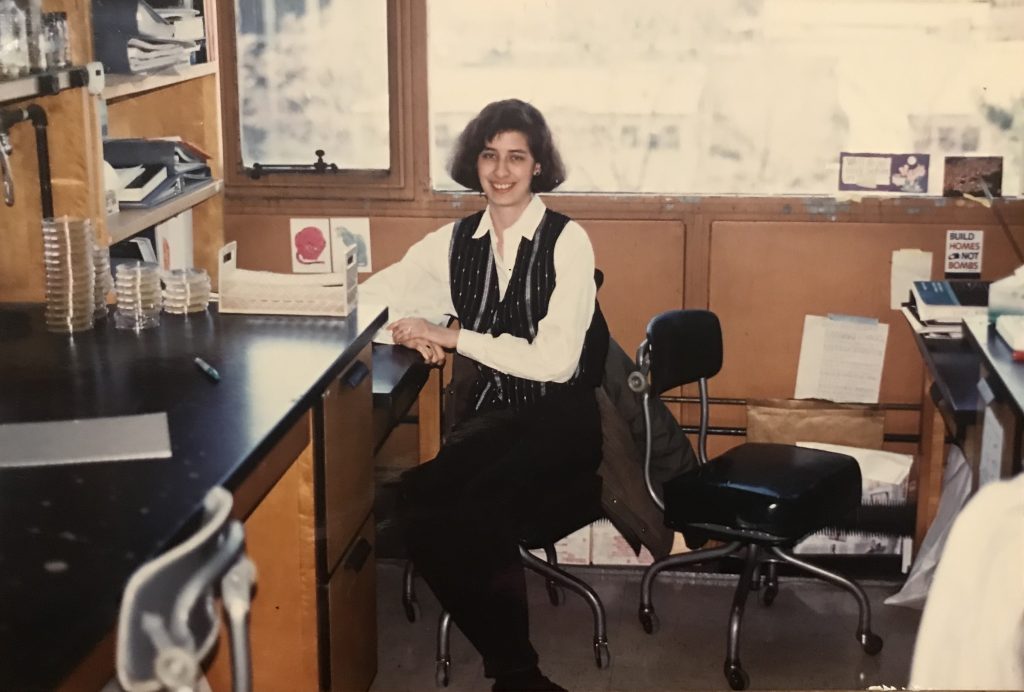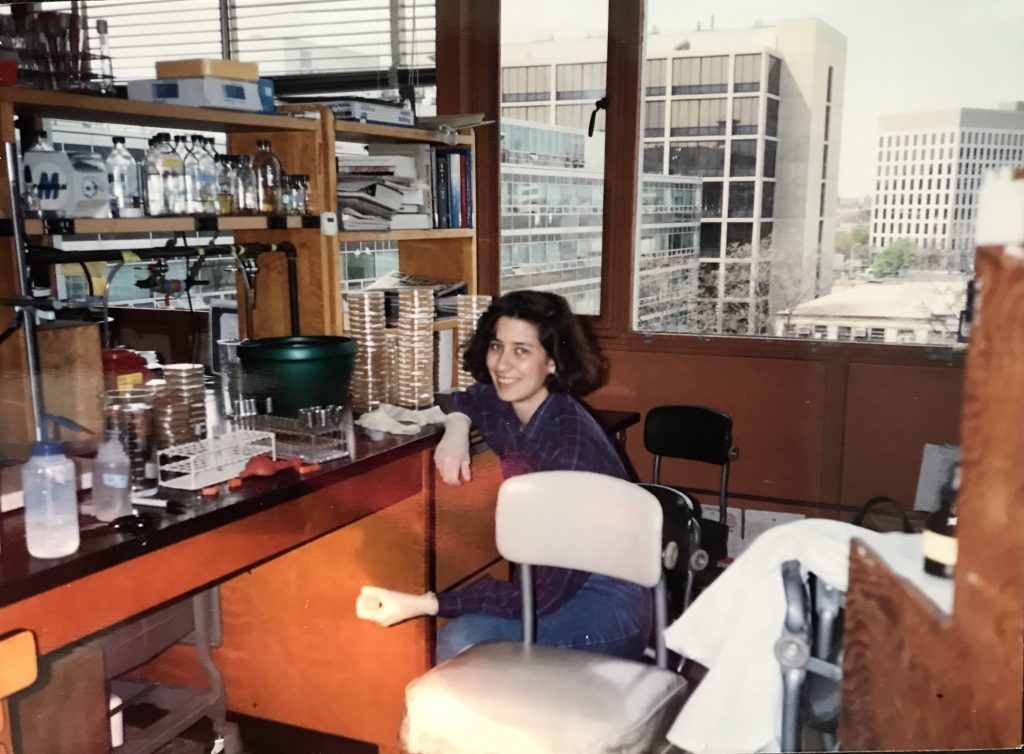Reactive Cysteines in P22 Tailspike Folding
Susan K. Sather
Graduate Student in King Lab from Spring 1989 through Summer 1993
sksather@yahoo.com
Meeting Jon
I met Jon for the first time when he gave a talk to first year graduate students during IAP (January 1989) as part of a series of faculty lectures to help first years choose a lab. I enjoyed hearing about Jon’s research on protein folding and virus assembly, but what really impressed me came soon afterwards when I saw him in the first-year graduate student lounge in the basement of Building 56 (The Pit) getting a cup of coffee and talking to graduate students. I had never seen faculty members in the lounge before and was struck by his rapport with and friendliness towards students. I took his “Protein Folding Problem” class in the spring of 1989 and joined his lab later in the spring.
From looking for molecular chaperone involvement to finding reactive cysteines in tailspike folding
My project initially was to look for molecular chaperone involvement in tailspike folding in vivo, specifically looking for evidence of GroEL interactions with tailspike. The research later shifted to look more generally for energy-dependent steps. I had shown that KCN blocked folding in vivo but was having trouble finding any evidence of chaperone interactions. My project and I were stuck. However, a fortunate conversation with a fellow attendee at a Cold Spring Harbor conference helped move the work in an unforeseen direction.
After hearing me mention that KCN blocked tailspike folding in vivo, this conference-goer suggested to me that another way to look for energy-dependent steps in tailspike folding would be to check if iodoacetamide (IAA) also blocked folding in vivo, as IAA can inhibit glycolysis by reacting with cysteines on glyceraldehyde-3-phosphate dehydrogenase.
Back in the lab after the conference, I looked for effects of IAA in vivo and found that it inhibited accumulation of trimeric tailspike, which was consistent with our hypothesis that effect was mediated through blocking energy metabolism. As a control though, I checked for IAA effects in vitro, and surprisingly (to us) IAA also blocked folding in vitro. I then showed that using 14C-labeled IAA either in vivo or in vitro resulted in label ending up in tailspike monomer but not trimer.
This shifted our thinking completely, and it now appeared that there were transiently reactive cysteines in tailspike that were exposed during the folding pathway. This initially seemed strange as native trimeric tailspike didn’t contain any disulfides and because the cytosol is a reducing environment. I next showed, using tailspike amber mutants and peptide fragments of tailspike labeled in vitro with 14C-labeled IAA, that the reactive cysteines were Cys 496, Cys 613, and/or Cys 635. (Later work by Anne Skaja Robinson demonstrated that the protrimer intermediate contains disulfide bonds.)
That last year in the lab was very exciting as it seemed each experiment led to a change in how Jon and I were thinking about the tailspike folding pathway!


Life in the King Lab
I enjoyed my time in Jon’s lab especially the collegial atmosphere. The lab lounge outside Jon’s office was a favorite hangout with a couch, newspapers, and journals. There were regular parties for the lab at Jon and Jackie’s house, the most memorable for me being my graduation party at Jon and Jackie’s house in Cambridge where Cindy Woolley’s trio (The International Trio) performed a special concert for the occasion.
After MIT
After graduating at the end of summer 1993, I moved to Palo Alto, California for a post-doc in Robert Simoni’s lab in the Department of Biological Sciences at Stanford, where I studied the regulated degradation of membrane protein HMG-CoA reductase. In 1997 I switched to a career that used my writing skills as well as scientific background and moved into patent law. I have been a patent agent at three biotechnology companies in the San Francisco Bay area, and currently am at a law firm, Alston & Bird, in their Silicon Valley office. I have come back to protein folding in that now a lot of my practice is writing patent applications on therapeutic antibodies designed to block the misfolding and aggregation of proteins involved in neurological disease.

